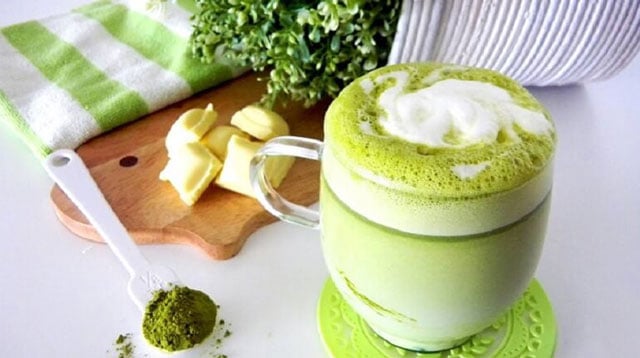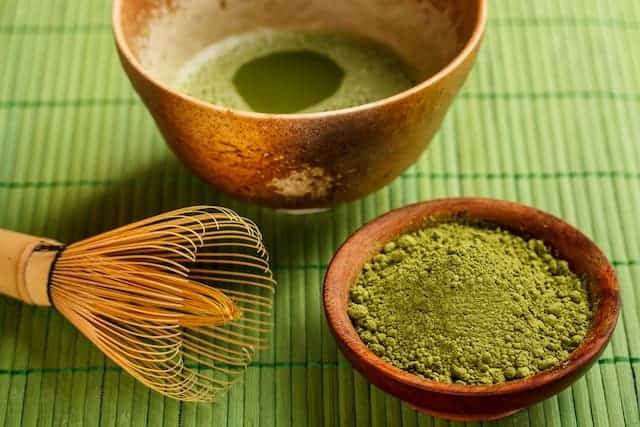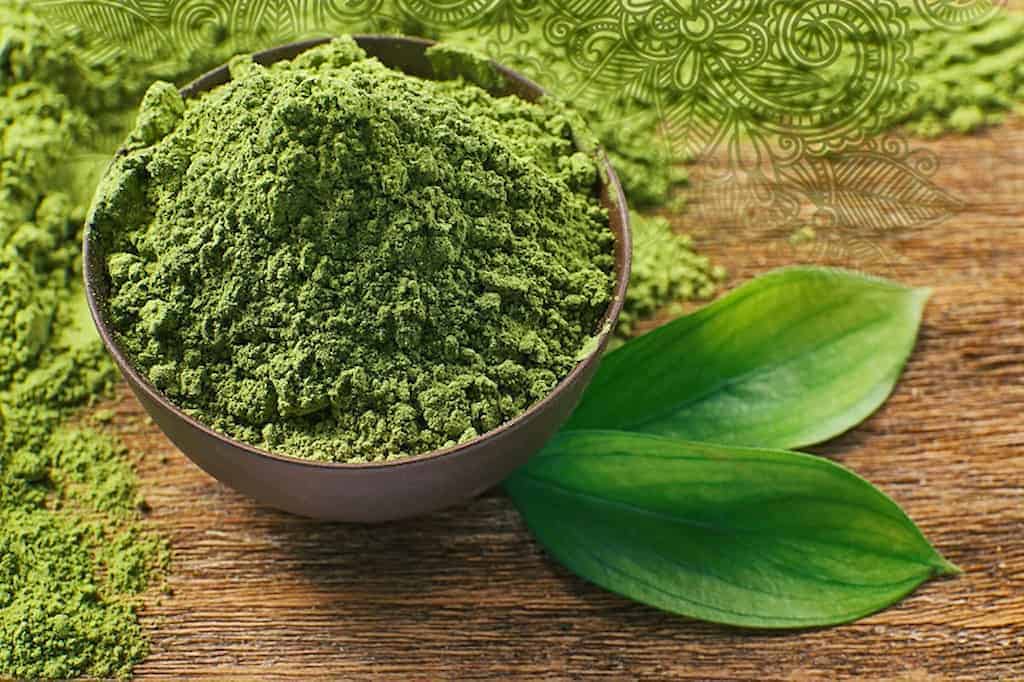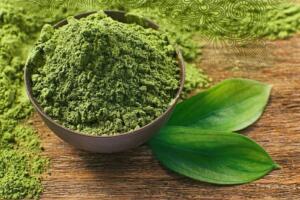Have you ever heard about Japanese matcha? If you are a fan of Japanese food culture, there is not way you have never heard about it. Matcha products are popular all over Japan and even worldwide. However, do you know about how matcha was born and where to buy the best products of Japanese green tea? Today, let’s go with us to find out what is so interesting about matcha and why Japanese people are so obsessed about it!
What is Matcha?
Matcha (抹茶) is Japanese green tea made by grinding Tencha by a stone mill or adding water and stirring the mixture to become a drink. Tencha, the raw material of matcha, is made by covering the tea leaves with straw or a special black sheet for about 20 days before picking them, then steaming and drying them to block sunlight. Originally, in Japan, the name of matcha is maccha (抹茶) but as its popularity all over the world, especially in Europe and America where it is named matcha, that name matcha gradually become familiar worldwide. This type of green tea is not only used as a drink but also as ingredients for sweets, ice cream, etc.
Difference between matcha and normal green tea:
Although matcha is considered to be one type of green tea there are significant differences between these two. Green tea is tea made without fermenting tea leaves. However matcha has a different manufacturing method from other teas. Sencha, which is generally used as a drink, has a producing process in which the tea leaves are grown in the sunlight, steamed, and then dried. Matcha, on the other hand, is made from tencha, the ingredient that have to cover by black sheet to block sunlight before picking. Blocking sunlight helps the matcha contain more amount of catechins and theanine than other types of teas.
Health info

As matcha products appear everywhere in Japan and around the world, many people drink it instead of coffee. Therefore, a lot of people wonder the nutrients in this green tea powder and how much caffein in it compared to coffee. Let’s take a look at what kind of nutrients Matcha actually contains!
Catechin
Catechin is a type of polyphenol that is recommended as a countermeasure against overweight. The reason for its use is that catechin makes it difficult to increase fat by slowing the rise in blood sugar levels.
In addition to matcha and green tea, catechins are also contained in fruits such as persimmons and apples, but the content is said to be higher in matcha and green tea than in fruits. However, compared to green tea, the amount of catechins in matcha is twice as much as in green tea.
Recently, there are commercially available beverages containing catechins, which are attracting attention all over the world as it is good for our health. Of course, just drinking matcha doesn’t mean that you are having a diet, but thanks to its use, it would be nice if you drink it to loose your weight.
Theanine
Theanine is a type of amini acid that appears in green tea and black tea. The use of theanine is really useful as it helps relaxing. If you can not sleep for a long time or if you are feeling tired, just try drinking green tea containing theanine.
This fact must surprise you but according to a research, matcha contains 10 times more theanine than green tea. Compared to other teas like black tea, matcha is definitely the best way to get theanine. For this reason, you can drink this Japanese type of green tea instead of coffee without being afraid of staying up all night. On the contrary, it will help you easily fall asleep at night!
Vitamin C
One of the reasons for matcha’s popularity is its richness in vitamins. One of the most interesting nutritional ingredients is vitamin C. When mentioning vitamin C, you may think of lemons or other fruits but the fact is that matcha contains a lot of it too. The importance of vitamin C is so undeniable that if you are tired of drinking lemon juice to get vitamin, try drink matcha instead.
Vitamin A, E, K
Not only vitamin C but matcha is also rich in vitamins A, E, and K.
Vitamin A, which is abundant in liver and eel, has important roles in human body, such as promoting growth and maintaining healthy and beautiful skin.
In addition, vitamin E is a nutrient that protects lipids in the body from oxidation and helps maintain healthy cells through its antioxidant action. Oxidation in the body can accelerate aging and cause lifestyle-related diseases such as arteriosclerosis. Therefore, taking vitamin E can prevent such diseases.
Vitamin K is a nutrient that maintains normal blood clotting ability.
Caffeine
One of the interesting fact about matcha is that it contains about 32mg of caffeine per gram of powder. Therefore, you can drink matcha instead of coffee as the Japanese green tea itself has caffeine too.
Different grades of matcha
With the same name, there are also various grades of matcha. These grades may have different aroma and prices also. Therefore, if you want to try the original high-end taste of green tea, pay attention to its grade.
| High-end matcha | Cheap matcha | |
| Aroma | sweet | fragrant |
| Color | bright bluish green | reddish |
| Taste | rich and strong umami flavor | rich |
Basically, the cheap matcha will be used as food ingredients while the high-end is often used in tea ceremonies. That grade of matcha is also called ceremonial grade and are expensive.
History

“Tea” is said to have appeared around 2700 BC in China. It seems that originally tea is considered to be a type of medicine. During that time, envoys and monks from Japan came back to their hometown, bringing the idea of “Tea”. Just like in China, tea was initially a medicinal product in Japan, and was used only by the aristocracies and the ruling class.
In 1191, when Eisai, the founder of the Rinzai sect of Buddhism, returned from China, he brought back tea seeds and introduced the matcha method of stirring powdered green tea in hot water. Thanks to him, the spread of tea even came to samurai society. During the Nanboku-cho period (North and South court period), matcha became popular among the commons. From the Muromachi shogunate to the Azuchi-Momoyama period, Murata Juko, Takeno Joo, Sen no Rikyu and others created a new ceremony of tea , and it was finally known as “Wabicha”. After that, it spread to the samurai class and continued up until now with the same custom of “tea ceremony”.
Lately, Japanese food becomes a boom in the world, mostly thanks to its healthy benefits. Among these popular dishes, matcha still places a very important role and is loved by a lot of people, not only Japanese.
How to make Matcha?
Step 1: Growing tencha
When producing matcha, the process is carefully watched from growing the raw materials until making the final products. Firstly, the maker grow tencha and fertilize with sufficient fertilizer and when the new shoots sprout in April, they will be covered to block sunlight. As a result, the leaves retains the umami component and produces the unique aroma of matcha.
Step 2: Picking tea leaves
After covering the leaves for about 3 or 4 weeks, the leaves will be picked. Methods can differ depending on the place they are grown, but there are two major methods: hand-picking and machine-cutting.
Step 3: Steaming
Then steam the picked sprouts. Make sure to keep the leaves as fresh as possible to stop oxidizing enzymes. If you do not steam it before the oxidizing happens, it will become black tea or oolong tea.
Step 4: Drying the leaves
After the steaming process, dry the steamed leaves. After finishing this step, the tea leaves that have been dried will be called tencha (the raw materials for matcha).
Step 5: Selecting leaves
All the leaves must be the same size. Moreover, the old leaves are also removed so that there are only good leaves left.
Step 6: Judging the tea
Experts will judge the carefully-selected leaves to see if it is qualified enough for making matcha. Then all the good quality tencha will be kept for the next producing process.
Step 7: Storage
The storage places must be a low-temperature and dehumidified environment such as in a refrigerator. By this way, it will help the tencha mature well and enhance its full-bodied aroma and mellow taste.
Step 8: Grinding tencha with a stone mill
After the long and careful selection process, the producers will finally grind the tencha into green tea podwer with smooth texture. This is all about the making of matcha!
Stores to buy
Hayashiya Shinbei (林屋新兵衛)

This is a matcha specialty store in Tokyo that has become a hot topic on Instagram for quite a long time. Just 3 minutes walk from Hibiya station. The menu of “Hayashiya Shinbei” has many beautiful matcha dishes for you to post on your Instagram.
Address: Tokyo Midtown Hibiya Hibiya Mitsui Tower 2F, 1-1-2 Yurakucho, Chiyoda-ku, Tokyo
Phone number: 03-6550-8727
Business hours: 11:00-23:00 (LO 22:00)
*Last order at 20:00
*Reservations not possible
Open on Sundays
Website: https://www.hibiya.tokyo-midtown.com/jp/sp/restaurants/21300/
Nakamura Tokichi – Ginza Main Store (中村藤吉本店 銀座店)

Mentioning green tea sweet in Ginza, Nakamura Tokichi is one of the best options for you. This store is so popular that on holidays, you even have to wait for 2-3 hours.
Address: GINZA SIX 4F, 6-10-1 Ginza, Chuo-ku, Tokyo
Phone number: 03-6264-5168
Business hours: 10:30-20:30 (LO 19:45) Open on Sundays
Website: http://www.tokichi.jp/stores/map_ginza.html
Nanaya (ななや)

If you are matcha lover, this place is a must-visit place that you have to write down immediately on your note. Nanaya is not only famous in Tokyo but also appears in social media all over the world. Everyone is excited about the 7 type of green tea gelatos with different levels. Such a good chance to challenge your self! How about trying the highest level!?
Address: 3-4-3 Asakusa, Taito Ward, Tokyo
Phone number: 03-3873-0311
Business hours: 10:00-17:00 Open on Sundays
Website: http://www.tocha.co.jp/
Takeaway
In Japan, matcha places such an important role in the Japanese food culture. It appears in almost everywhere in Japan from drinks, icecream, sweets, etc. Although we call it Japanese green tea, the surprising thing is that matcha is not really the normal green tea. With the different producing method, it brings out the unique aroma and taste that is loved by a lot of people. What about you? What you love the most about this amazing matcha? Comment and let us know your opinion!
If you are looking for a dish that goes well with matcha, how about trying Kakigoori? Click here for the best recipe!



Comments